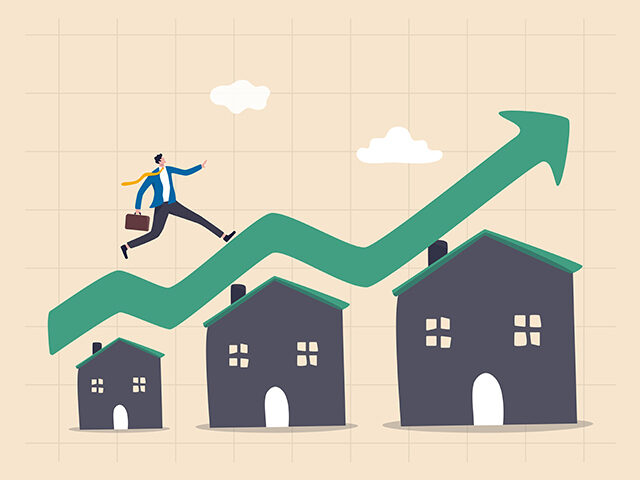Home Prices Are Rising Again
The housing recession is over—for now.
This is the inescapable implication of the most recent data on home prices and sales of new homes. The S&P/Case-Shiller 20-City Composite Home Price Index rose in February. On an unadjusted basis it was up 0.2 percent. Seasonally adjusted it was up 0.1 percent, the first increase since June of last year. Wall Street economists, who have not yet caught on to the turn in the housing market, were predicting a decline of 0.3 percent.
The month-over-month increase in the seasonally adjusted National Index was at 0.16, the first gain in seven months. The trend toward an improved market actually began at least a month earlier, when month-to-month price declines began to soften, and perhaps as far back as October following the September nadir in month-to-month declines.

Keep in mind that Case-Shiller Home Price Indices are three-month averages. So the February index reading is an average of closing prices in December, January, and February. As a result, the February result should not be seen as a stand-alone monthly gain but as confirmation of a trend toward higher prices.
The Federal Housing Finance Agency’s home price index shows even stronger gains, with prices rising 0.5 percent nationally in March.
New Home Sales Show Unexpected Strength
Sales of newly built homes in the U.S. jumped to the fastest rate in a year. The Census Bureau said on Monday said that new single-family homes sold at a seasonally adjusted annual rate of 683,000 in March, far exceeding Wall Street expectations for 634,000. As the chart below indicates, sales have been bouncing up and down but trending up since last September.

If you zoom out the timeframe a bit, you can see that while new home sales look unimpressive compared with the pandemic housing boom, they are right around where they were before the pandemic. Compared with most of the past decade, sales volumes are very high indeed.

They are, however, still very comfortably below the housing bubble years.

The average selling price of a new home sold in March was $562,400, near the peak hit in December and—weirdly enough—exactly what it was in April of last year.

These are just the latest signs that the housing downturn hit the bottom, and the market is now recovering. A month ago, the National Association of Realtors (NAR) said that sales of existing homes surged 14.5 percent in February, the largest monthly gain since the Flight from the Cities — the pandemic and riot-induced housing rush in June of 2020 when sales jumped a record-breaking 20.7 percent. This was the first monthly rise in sales following 12 consecutive months of declines, the longest streak of falling sales in records going back to 1999.
Existing sales fell again in March, declining 2.4 percent, but this looks largely like a problem of homeowners not wanting a pricier mortgage on their next house rather than a lack of demand. The NAR said there were just 2.7 months’ supply of homes on the market, half of what would be considered a normally balanced housing market.
And, of course, homebuilder confidence has been rising for four months in a row.
How Will the Fed React?
The housing market’s recovery is very likely linked to the conviction that the Federal Reserve only has one more interest rate hike left before it puts this cycle on hold. The federal funds futures market currently implies a 75 percent chance of hike at next week’s meeting and close to no chance of a hike after that. In fact, the odds currently favor a cut at the July meeting. The market is pricing in something like three quarter-point cuts by the end of the year.
This expectation for a Fed pause and subsequent cuts has kept down mortgage rates this year, so that the thirty-year fixed rate has never approached within 25 basis points the peak hit last year. Lenders who expect rates to stop rising or to fall have little incentive to raise rates now because peak rates just get taken out by later refinancing. Buyers may be willing to accept a higher mortgage rate than they would like if they see a looming opportunity to refinance next year.

The problem with this is that a revival of housing demand and a stasis in mortgage rates works contrary to the Federal Reserve’s intention to tighten financial conditions. Judging by mortgage rates alone, financial conditions have not tightened at all since mid-November. Surging new home sales creates additional demand for workers in construction, undermining the Fed’s attempt to soften demand.
This raises the risk that the Fed will react to the strength of the housing market by signaling that it intends to raise rates further than the market expects. To put it slightly differently, the recovery of housing makes it more likely that the Fed will take actions that will push the economy into a recession. The stronger the housing market gets now, the harder the “landing” will have to be later. We could very well see a double-dip housing recession after a mini-recovery this spring and summer.
As we’ve been saying, good news today, is bad news tomorrow.

COMMENTS
Please let us know if you're having issues with commenting.